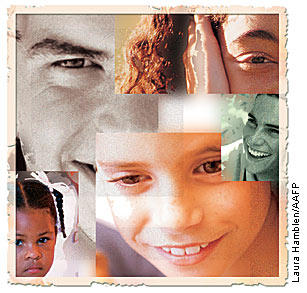Posted in Health | 21/11/2009
Patients Eligible children were 6-12 years of age with a diagnosis of ADHD based on psychiatric history and a review of the DSM-IV diagnostic checklist. Children must have scored >24 on the ADHD-RS at screening and must have been rated “moderately ill” or worse on the CGI-SI. Newly diagnosed treatment-naive patients and previously diagnosed patients who were previously taking some type of ADHD medication but who may not have been receiving adequate treatment as judged by the clinician in conjunction with the parents were eligible for inclusion. Female patients who had experienced menarche were excluded. Patients also were excluded if they had an eating or substance use disorder; a comorbid psychiatric condition other than oppositional defiant disorder; a history of seizures, tic disorder, mental retardation, severe developmental disorder or family history of Tourette’s syndrome; or hyperthyroidism or glaucoma. In addition, patients were excluded if they were receiving a medication that…
Read more

Posted in Health | 20/11/2009
The most studied and most often used stimulant medication for attention-deficit/hyperactivity disorder (ADHD) is methylphenidate (MPH). By 1996, there were 133 randomized, controlled trials describing the treatment of ADHD with MPH. However, MPH has a short duration of effect that results in a need for multiple daily dosing. Therefore, several long-acting formulations have been developed to minimize the need for repeated daily dosing. One such formulation of MPH uses OROS, technology (OROS MPH) to allow for once-daily dosing. The OROS MPH (Concerta®) formulation has been shown to be safe and effective during short-term, double-blind, controlled trials. In addition, interim results from an open-label, long-term study of OROS MPH reported that efficacy is maintained over 12 months and that OROS MPH was associated with significant improvements in symptoms of treatment-naive patients, according to ratings by caregivers and teachers.
Read more
Posted in Health | 19/11/2009
Lastly, we will focus this year on strengthening our health disparity collaborations with two cultural giants in our community: the Black Church and the Black Press. Historically, the Black Church has been our bridge over troubled waters and a rest stop along the Underground Railroad. Today, we know that countless African-American churches across the country shoulder the burden of health disparity through their ministries to the sick and through church-based health promotion programs. This summer, I will be reaching out to religious leaders to explore ways that we can step up our mutual efforts.
Read more
Posted in Main | 18/11/2009
As I share with you our priorities for the coming year, I must emphasize that the overarching focus of our ongoing work at the NMA is to eradicate health disparities and create a healthier people.
Read more
Posted in Main | 17/11/2009
Here again, if we “rewind the tape,” we see that this problem of unequal treatment in the U.S. healthcare system is not a new problem. The NMA was founded during early Jim Crow, when African Americans pursuing careers in medicine were banned from all-white medical schools and barred from hospital practices. It was a time when the laws of the land consigned African-American patients to separate and unequal health facilities. As late as 1912—right here in the City of New York, well north of the Mason Dixon line—there were 10 Jim Crow hospitals. And only three of the city’s hospitals permitted black physicians to treat black patients.
Read more
Posted in Main | 16/11/2009
Today, here at the promise of daybreak of a new century, our nation’s medical profession faces both old and new challenges. The unscrambling of the human genome, advances in transplantation, the emergence of electronic patient management systems and myriad other 21 st-century medical technologies all herald a new era in cutting-edge healthcare. At the same time, the stalwart march of technology gives rise to new questions about opportunities for minority physician training and uncertainties about how American patients will access and speak the language of new medical innovations.
Read more
Posted in Main | 15/11/2009
INTRODUCTION I am humbled and honored by your vote of confidence, and I am immensely proud to accept my charge as the 106th president of the National Medical Association. My warmest and most heartfelt gratitude to all of you.
Read more
